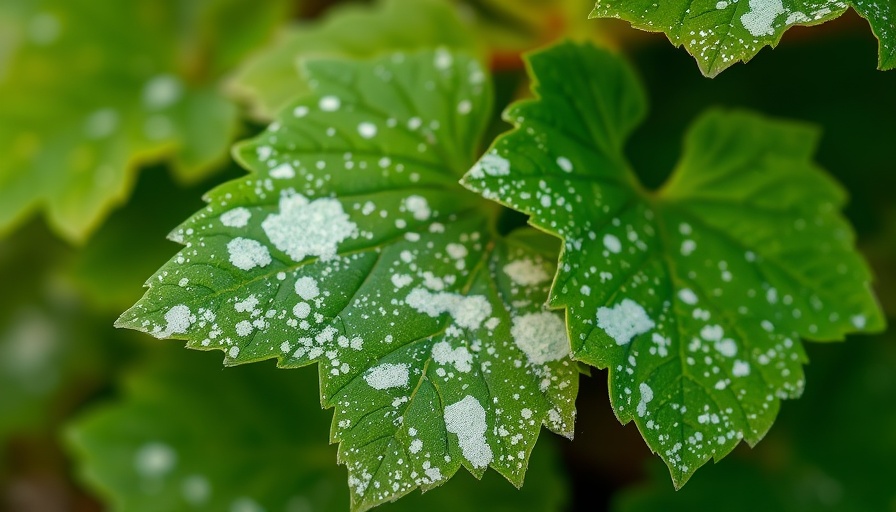
Recognizing the Signs of Powdery Mildew
If you’ve recently noticed white spots dotting your grape leaves, you’re probably encountering powdery mildew, a common fungal disease during hot, humid summer months. This fungus spreads rapidly through spores, thriving in damp environments rich in shade and debris. While it’s relatively easy to manage early on, allowing it to proliferate can severely impact your grapevine’s ability to photosynthesize, thus affecting the quality and quantity of your harvest.
What Exactly is Powdery Mildew?
Powdery mildew is not just a single entity; it consists of various fungal species that target specific plants. In the case of grapes, it manifests as soft, fuzzy growth on leaves—which can severely hinder their photosynthetic capabilities. If you see these fluffy white patches, act swiftly! Not only do they mar the aesthetic appeal of your vineyard, but they can also spread to nearby plants like squashes and ornamentals if left untreated.
Preventive Measures to Protect Your Grapes
Prevention is the best strategy against powdery mildew. It’s vital to ensure good airflow around your plants and to keep them properly spaced. Avoid watering late in the day to reduce moisture accumulation on the leaves, and regularly clear away any organic debris that could harbor spores. Organic fungicides, such as those containing milk proteins or baking soda, can be effective treatments if applied when you first notice signs of mildew.
Steps to Treatment Once Powdery Mildew Appears
Should your grapes show signs of powdery mildew, timely treatment is critical. Start by trimming back heavy foliage to allow more sunlight to penetrate. This can create a less habitable environment for the fungus. Next, consider applying a fungicide specifically designed to combat powdery mildew, following the instructions closely for the best results. Homemade remedies, like a solution of water and baking soda, can also yield effective results if used promptly.
The Importance of Healthy Practices
The health of your grapevines hinges on good gardening practices. Regularly check for the earliest signs of disease and maintain the environment around your plants to ensure resilience against fungal growth. Practices such as ensuring proper drainage will help mitigate humidity, a key factor in mildew development.
Embracing the Local Landscape in Muskegon
For home gardeners in Muskegon, understanding your local climate is paramount to mitigating issues such as powdery mildew. Utilizing native plants and appropriate gardening techniques, such as starting a backyard planting box or constructing elevated planter boxes, can help create a thriving garden environment. Moreover, these initiatives contribute to sustainable landscaping, ensuring not only your grapes but all your garden plants remain disease-free and productive.
Your Next Steps for a Flourishing Garden
Armed with knowledge about powdery mildew and its implications, you’re now ready to safeguard your grapevines and overall garden. Whether you decide to implement preventative measures or act swiftly at the first signs of trouble, the health of your plants depends on you. It's time to take your gardening into your own hands!
For expert help in maintaining your outdoor space, consider contacting your local lawn care service. Your garden deserves the best care possible. Whether it’s routine maintenance or specific treatment for issues like powdery mildew, reach out to Norther-LawnCare.com, 231-450-3414, and ensure flourishing growth this season.
 Add Row
Add Row 
 Add
Add 


Write A Comment